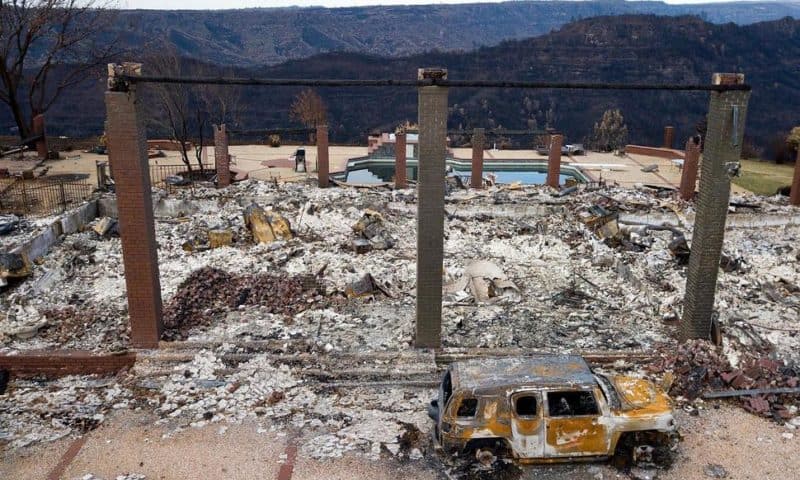Pacific Gas & Electric Corp. is inching closer to taking responsibility for the deadliest U.S. wildfire in a century.
SAN FRANCISCO — Pacific Gas & Electric Corp. inched closer to taking responsibility for the deadliest U.S. wildfire in a century, saying Thursday it is “probable” that one of its transmission lines sparked the blaze last year that killed 86 people and destroyed most of the city of Paradise.
The embattled utility company, which filed for bankruptcy protection in January, said it’s taking a $10.5 billion charge for claims connected to the fire in its fourth quarter earnings. The fire destroyed 14,000 homes in and around Paradise — a city of 27,000 people in the Sierra Nevada foothills.
The cause of the fire is still under investigation. But firefighters located its start near a tower on PG&E’s Caribou-Palermo transmission line.
“Based on the information currently known to the company and reported to the California Public Utilities Commission (CPUC) and other agencies, the company believes it is probable that its equipment will be determined to be an ignition point of the 2018 Camp Fire,” PG&E said in a news release.
PG&E has previously acknowledged that the Caribou-Palermo transmission line lost power right before the fire and was later found to be damaged. It also included the blaze among the more than $30 billion in potential wildfire liabilities it said it was facing when it announced plans to file for bankruptcy in January. But it had not gone as far as it did Thursday in connecting the line to the blaze.
“We recognize that more must be done to adapt to and address the increasing threat of wildfires and extreme weather in order to keep our customers and communities safe,” said John Simon, interim CEO of PG&E. “We are taking action now on important safety and maintenance measures identified through our accelerated and enhanced safety inspections and will continue to keep our regulators, customers and investors informed of our efforts.”
John Geesman, an energy consultant and former member of the California Energy Commission, said PG&E’s announcement Thursday is significant and will increase scrutiny of the company by lawmakers and others.
“This corroborates a lot of the worst things that people have believed,” he said.
The Wall Street Journal, citing federal records, reported Wednesday that PG&E since 2013 has repeatedly delayed safety work on the Caribou-Palermo line, including replacing towers and wires. PG&E said in a statement that the story “inaccurately portrays planned electric transmission regulatory compliance work, and omits key aspects of the work we are currently doing to enhance safety.”
PG&E also recorded a new $1 billion charge related to 2017 wildfires in Northern California.
Citing extraordinary challenges from wildfires, PG&E’s management concluded the circumstances “raise substantial doubt about PG&E Corporation’s and the Utility’s ability to continue as going concerns.”
PG&E also said there was an outage and downed wires in another location, called Big Bend, on the morning of the fire that destroyed Paradise.. While fire officials have identified the second location as another potential ignition point, PG&E said it’s unsure if that problem might have ignited the fire.
The Caribou-Palermo transmission line has been out of service since mid-December, and inspections have identified equipment that needs repair or replacement, the company said.

